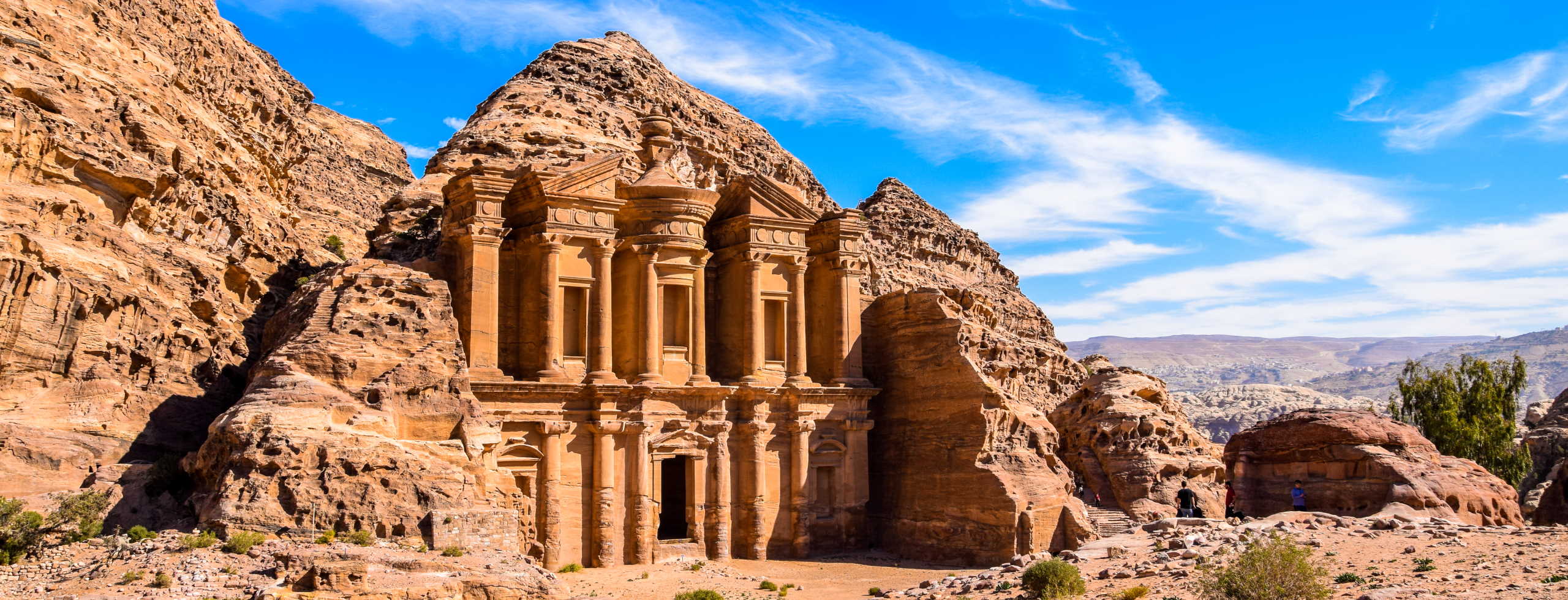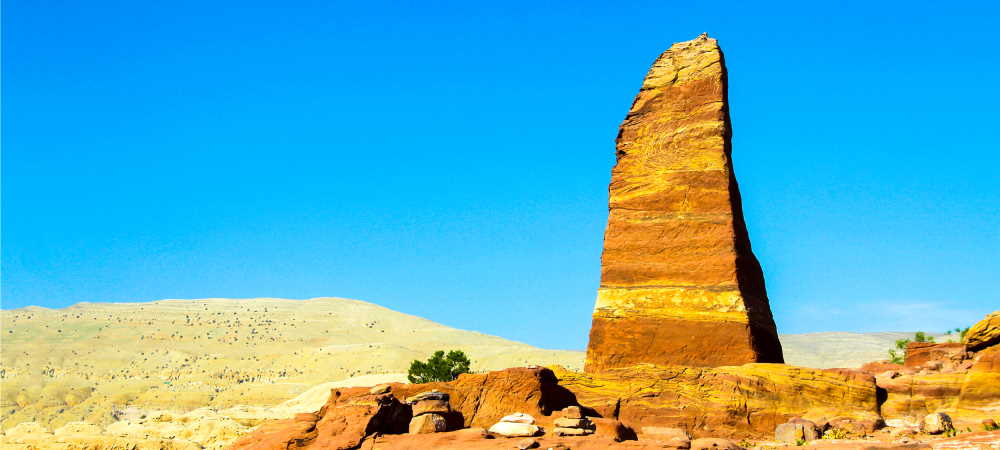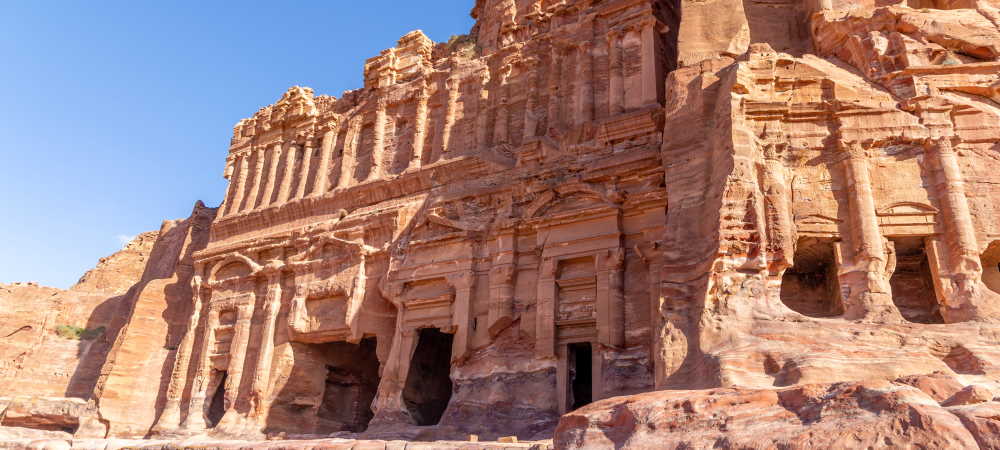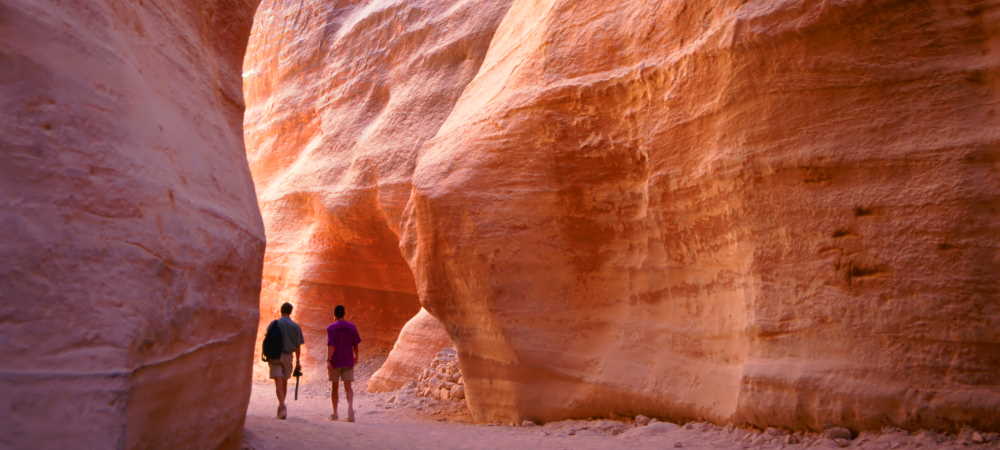-
Destinations
All Destinations
We'll craft an unsurpassed vacation just for you.
All you'll have to do is land
Choose your destination
- Pick your Trip
-
 Build your True Trip
Build your True Trip
- How It Works
- Blog
-

A Quick Guide to Petra
by TrueTrips
- 1
A QUICK GUIDE PETRA

Things to Know
For centuries, the great ancient city of Petra remained hidden from the world amidst the windswept desert landscape of southern Jordan. It wasn’t until the early 19th century, when a Swiss explorer named John Lewis Burckhardt who was en route from Jordan to Egypt heard rumors of ancient ruins near what was believed to be the biblical tomb of Aaron (the brother of Moses), and decided he would set out to explore the site himself. As it turned out, on August 22, 1812, he would become the first modern European to witness the ancient Nabataean city in what is regarded today as one of the most significant archaeological discoveries in the Middle East. Famous for its extraordinary rock-cut architecture and sophisticated water conduit system that allowed the city to thrive even in the harsh conditions of the Jordanian desert, Petra is doubtless one of the world’s most fascinating archaeological sites to explore, and an absolute must for anyone visiting Jordan.

Things to See
The Bab Al Siq Triclinium and the Obelisk Tomb
An impressive burial complex located near the entrance to the Siq. A unique example of Nabataean architecture.
The Siq
This 0,75-mile-long gorge is the entrance to the ancient city of Petra. At certain points it is no more than 10 feet wide while its height changes between 299 and 597 feet. A unique feature of this geological formation is that unlike slot canyons that are shaped by water erosion, the Siq came into existence when tectonic forces split the mountain in two.
The Treasury
Locally known as the Al Khazneh, this awe-inspiting structure was originally built as a mausoleum during the reign of the Nabataean King Aretas IV Philopatris between 9 BC and 40 AD.
The Street of Facades and the Theater
The “Street of Facades” is a cliff face on the Outer Sig that is home to more than 40 tombs and houses carved into the sandstone. A little further ahead, Petra’s spectacular Theater is another impressive structure carved straight out of the rock that could seat up to 8500 spectators.
The Colonnaded Street

Originally created by the Nabataeans, this would have been one of the main shopping streets of ancient Petra. The street was refurbished in 106 BC under Roman rule and the parts that can be seen today date back to that time.
The Great Temple
A monumental complex located south of the Colonnaded Street. It is believed that the complex was completed under the rule of King Aretas IV, but its exact function remains unknown.
The Monastery
Also known as Ad Deir, this monumental building is the second most visited site in Petra. It is believed that the building was originally dedicated to the Nabataean king, Obodas I.
The Royal Tombs
Burrowed into the western slope of the Jabal al-Hupta rock massif, the Royal Tombs is a collection of four impressive mausoleums. The Urn Tomb is the most distinctive of the group, and it was also used as a cathedral during Byzantine times.

Things to Do
Hike Through Petra
More often than not, when people think of Petra, they think about the imposing rose colored façade of the Al Khazneh and though this attraction is undeniably impressive, it is still only a small part of the treasures hidden in the ancient city. The entire archaeological site covers a vast area of a barren desert and in order to see all of it you can expect to do a fair amount of walking. There are several trails of varying difficulty to choose from, though if you want to see some of the most impressive locations in the city like the High Place of Sacrifice and the Monastery, you’ll have to take on some of the harder routes. To get the most out of your hiking experience, it’s a good idea to make some preparations in advance. Some good suggestions include dressing appropriately for the desert climate which can be scorching during summer and chilly during winter, packing a sturdy pair of hiking shoes to navigate the uneven terrain safely, and bringing plenty of water, especially if you’re planning on spending the entire day on site.
